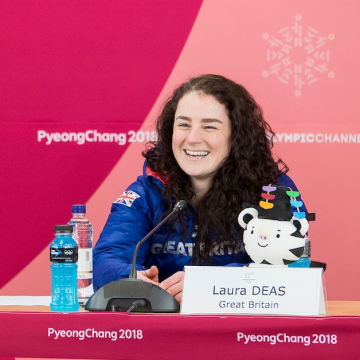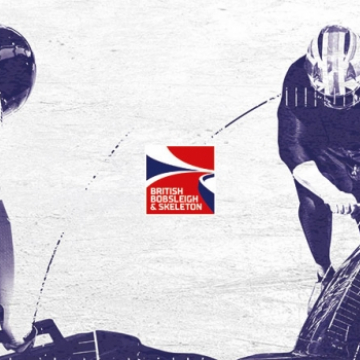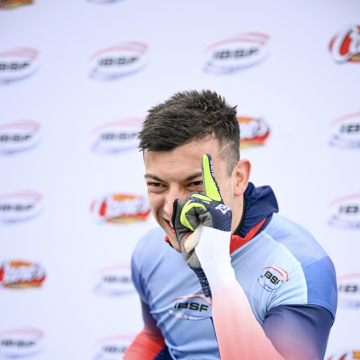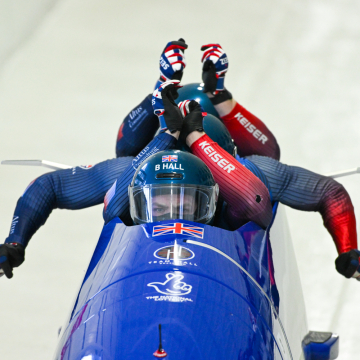McIntosh battles back from brain surgery
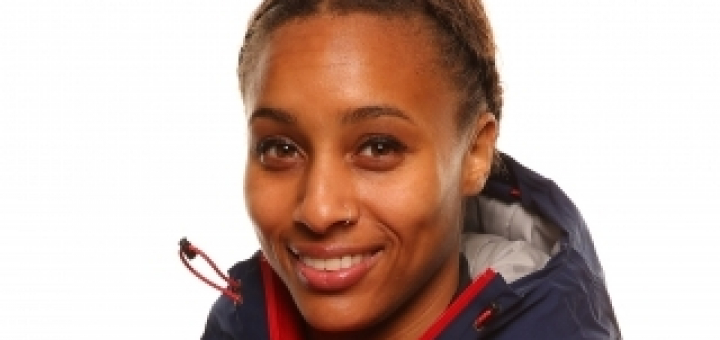
For most people, brain surgery would signal the need to slow down, but for British Skeleton star Jor’dân McIntosh, it’s meant exactly the opposite.
Just a year after suffering a haemorrhage that required a life-saving operation and threatened to end a promising professional career, the 24-year-old slider is preparing to get back on the ice in one of the world’s most exhilarating sports.
Soon McIntosh will be hurtling head first down a mountain, hitting speeds of up to 143 kilometres per hour with her face just inches from the floor, when this time last year a genetic condition known as an arteriovenous malformation left her learning to walk again and facing a far from certain future.
“I was in the gym having finished my session and I suddenly had what I thought was a thunderclap headache,” said McIntosh, after the previously undetected condition hit her for six at the beginning of July 2014 and forced her to sit out the entire sliding season following a fine debut campaign the previous year.
“It was excruciatingly painful and it just kept getting worse. I started shaking and was really unsteady on my feet but, luckily, my coach, Ed McDermott, was with me and he picked me up and carried me to the clinic at our base at the University of Bath.
“I had drips put in me straight away and was taken by ambulance to the Royal United Hospital - Ed didn’t leave my side. I had scans soon after arriving and it showed a bleed on my brain. I was then rushed to Bristol South Mead Hospital as things were far more serious than I first thought.
“I said to Ed when it first happened, ‘It’s probably just a massive headache’. I suffered from migraines anyway and I thought I’d be back training in a couple of days. But after I’d had that first scan, I sat up and asked to go to the toilet and the nurse rushed straight over and told me in no uncertain terms, ‘No! You have to lie down!’
That’s the moment when I knew it was serious. It wasn’t just a headache - it was a brain haemorrhage!
Serious was an understatement given the extent of both the potential short and long-term consequences for McIntosh: there was no easy cure for a condition that could kill her at any moment if she didn’t take immediate action.
“I asked what would happen if they just sent me away with a heap of painkillers and I was told that there was a 50 per cent chance that it would happen again within a year. I could have ended up permanently disabled, or even dead. It was pretty inevitable that it would have killed me at some stage if I hadn’t got it sorted.
“Radiotherapy was an option but there was only an 80 per cent chance of that working and it would be two-four years before we would know if it had been a success. Plus, radiotherapy would only have shrunk it so I would still have been at risk of a stroke or further haemorrhaging. And if it didn’t work, we’d have to go for surgery anyway.
“The only definitive way to get rid of it was to operate. It was the most painful option but it was the only one that would mean I could get on with my life without worrying about what was around the corner.”
Perhaps unsurprisingly for those who know the former sprinter best, McIntosh’s love of skeleton was at the heart of her decision to opt for surgery. It may have been the most intrusive scenario but it was the only one that would see her hold on to her hopes of reaching the Olympics and fulfilling her undoubted potential.
“Having surgery was also the only option that would mean I could carry on with Skeleton. When I knew that, my mind was made up pretty instantly.
Getting back on to the ice was just so, so important to me. ‘What about skeleton?’ was the first thing I asked when I found out I was seriously ill. I just couldn’t picture my life without the thrill of sliding.
“I remember Ed saying, ‘We’ll cross that bridge when we get to it - people can die from this’. I even asked my surgeon if I could be back on my sled by Christmas, but then I was afraid that I’d never slide again. My mum knew that was all that was bothering me and she asked the surgeon whether I’d be able to. The answer I got was a, ‘Yes, but only time will tell. There’s a huge amount of work to do’.
“Things couldn’t happen fast enough, but I had to accept that the situation was bigger than me. It wasn’t like a broken arm where I could take the cast off, do some physio, and the pain and the problem would just go away.
“And the seven-hour op was hardly straightforward, either. I was told that there was a five per cent chance that all complications could happen and I wouldn’t make it through. That was when it really hit home - that I might not come out of this. Looking at my mum then and seeing her face was one of the hardest moments of the entire ordeal.”
Plenty of tough times have followed since surgery, even though the Derby-born athlete and ex-Loughborough University student has remained remarkably positive throughout thanks to the love of her family, friends and fellow GB stars. Her team mates have been a massive support and undoubtedly hastened her recovery, but seeing them all out on the track last winter brought mixed emotions for McIntosh.
“There were days where it was hard to stay upbeat. There were lots of ‘what if’s?’ I knew that my surgeon was very experienced but I was worried that I might not be able to function the way I used to.
I knew my life could change at the hands of this. Nothing is ever 100 per cent with brain surgery and I just had to hope and pray that it all went well.
“I had a bit of a meltdown in January - that was the hardest time. I was so happy that my friends were doing so well on the circuit, but I was wishing I could be there. That was probably the hardest winter of my life. I was going to the physio doing hip bridges and little jogs while my team mates were on the ice and I was thinking, ‘This isn’t what I was born for!’ I knew it was going to be tough, but I didn’t know it was going to be that tough.”
Thankfully, those testing times are now well and truly behind her and this winter McIntosh will be back in the thick of the action on the ice rather than watching from afar.
Having been discharged by her physio in early May, McIntosh is now in full training and hitting all her targets, both in the gym and on the new and improved push track at the home of British Skeleton in Bath.
And having experienced plenty of pain and heartache over the past 12 months, the blood, sweat and tears that will be required to complete her journey to the 2018 Winter Olympics in PyeongChang seem small change in comparison.
“It’s made me stronger and has given me extra motivation: nothing that the gym or track can throw at me can compare to the amount of strength I had to have just to get through that situation. Anytime I’m having a bad lifting session or I’m not sprinting as fast as I’d like, I take it on the chin.
If things don’t always go right in skeleton, or in life, I now know I can get through it.
“When I was given the all clear, I was like a little kid at Christmas! I couldn’t stop smiling the first time I got back in the gym and out on the push track. I’m determined to turn the situation into a positive one, and if it helps me kick on as a slider then it will have been just that.”
